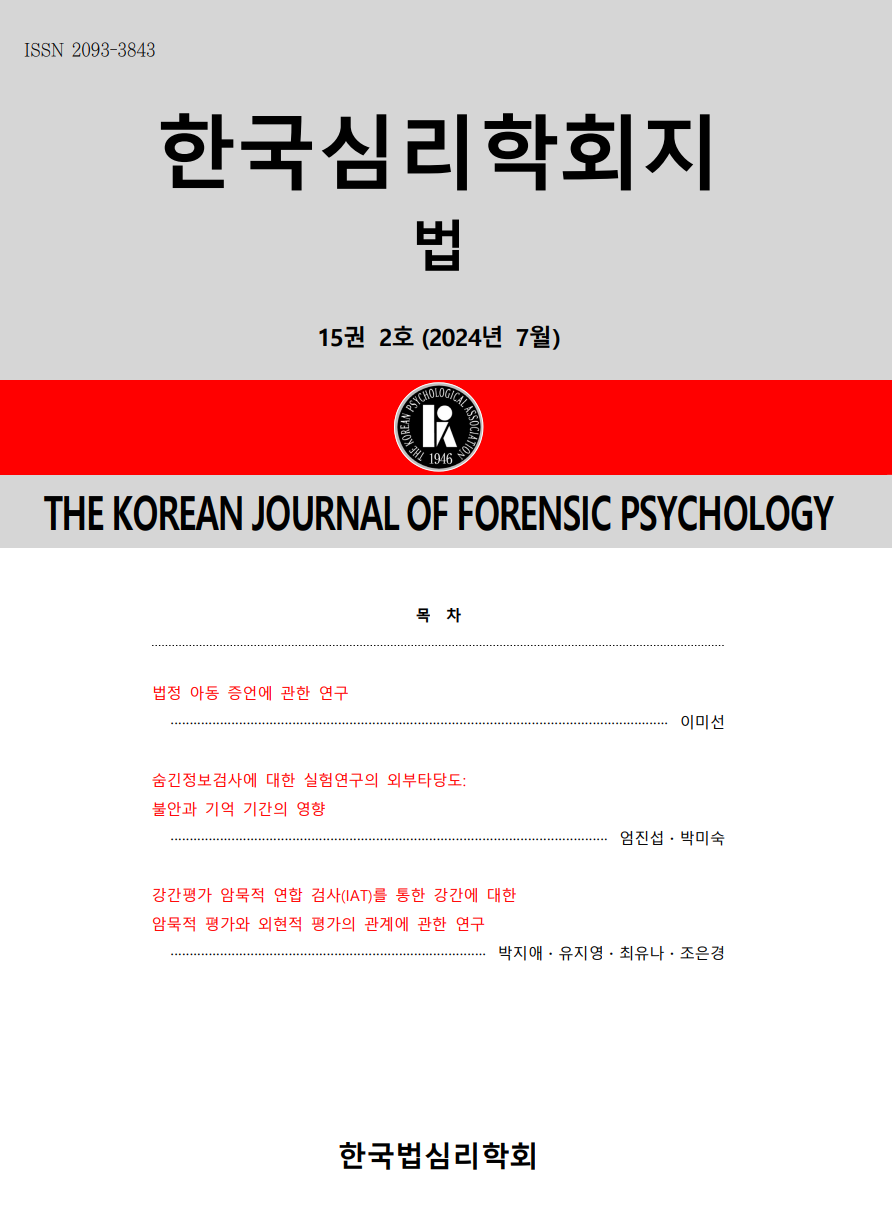open access
메뉴
open access
메뉴 ISSN : 2093-3843
ISSN : 2093-3843

The purpose of this study is to investigate the characteristics of the offender and the victim, location of trauma, and the methods of crime depending on the type of the weapon used for the homicide. Among various types of weapon used in homicide, the present study compared homicides by sharp force, which is the most frequently used homicide weapon in South Korea, with homicides by ligature/manual strangulation. Based on a total of 302 homicide cases occurred from 1998 to 2008, we compared homicides by sharp force with homicides by ligature/manual strangulation by using Chi-square analyses and T-test, and additionally logistic regression was used to analyze the factors affecting weapon type. As a result, the offender who used sharp force had a bigger number of criminal records than offenders who committed homicide by ligature/manual strangulation, especially the criminal record of violence. Compared to victims of homicide by sharp force, victims of ligature/manual strangulation were significantly younger, and were more likely to be female and single. Most of the victims by sharp force sustained injury on the chest, whereas victims by ligature/manual strangulation were more likely to sustain injury on the head and face. In terms of methods of crime, offenders of homicides by ligature/manual strangulation were more likely to bind, gag, and rape the victim, steal from the victim, and stage the scene after the offense than those of homicides by sharp force. Finally, the limitations of the current study were discussed and the suggestions for future studies were made.
강은영, 박형민 (2008). 살인범죄의 실태와 유형별 특성. 서울: 한국형사정책연구원.
고선영 (2011). 살인범죄자 프로파일링을 위한현장행동특성 고찰. 한국심리학회지: 법정, 2(2), 135-158.
김경옥, 이수정 (2005). 범죄자 프로파일링을 위한 연쇄살인 범죄의 유형 고찰. 한국심리학회지: 사회 및 성격, 19(1), 131-149.
대검찰청 (2016). 2016 범죄분석. 서울: 대검찰청.
백창현 (2007). 여성살인범의 통계적 특성에관한 연구. 한국범죄심리연구, 3(1), 85-116.
서종한 (2010). 정신분열증 가해자의 살인 전스트레스요인과 살해수법. 한국심리학회지: 법정, 1(2), 109-123.
이봉한 (2009). 한국 연쇄살인범죄의 테마와특성 분석. 형사정책, 21(2), 217-244.
이 윤 (2016). 범죄수사에서의 의사결정을 위한 베이지안 네트워크 활용 가능성 연구. 한국심리학회지: 법정, 7(3), 157-180.
이재영, 유영재, 박보라 (2014). 미디어의 살인사건 보도에 관한 연구. 한국범죄심리연구, 10(2), 215-240.
이현정, 박권수, 최창섭 (1999). 정신분열병 환자의 살인에 관한 연구. 대한법의학회지, 23(2), 37-41.
Ambade, V. N., & Godbole, H. V. (2006). Comparison of wound patterns in homicide by sharp and blunt force. Forensic Science International, 156, 166-170.
Au, K. I., & Beh, S. L. (2011). Injury patterns of sharp instrument homicides in Hong Kong. Forensic Science International, 204, 201-204.
Fischer, J., Kleemann, W. J., & Tröger, H. D. (1994). Types of trauma in cases of homicide. Forensic Science International, 68, 161-167.
Häkkänen, H. (2005). Homicide by ligature strangulation in finland: Offence and offender characteristics. Forensic Science International, 152, 61-64.
Henderson, J. P., Morgan, S. E., Patel, F., & Tiplady, M. E. (2005). Patterns of non-firearm homicide. Journal of Clinical Forensic Medicine, 12, 128-132.
Karlsson, T. (1998) Sharp force homicides in the stockholm area, 1983-1992. Forensic Science International, 94, 129-139.
Rea, L. M., & Parker, R. A. (1997). Designing and Conducting Survey Research: A Comprehensive Guide. San Francisco, CA: Jossey-Bass.
Rogde, S., Hougen, H. P., & Poulsen, K. (2000). Homicide by sharp force in two scandinavian capitals. Forensic Science International, 109, 135-145.